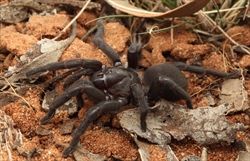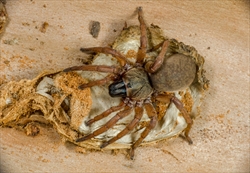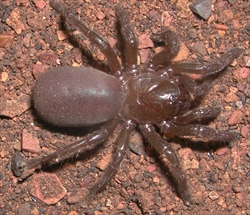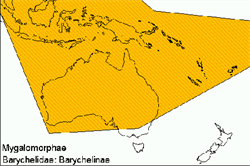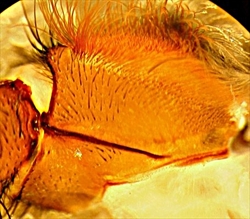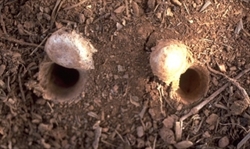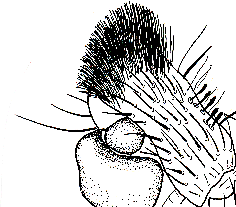Small to large (2–30mm).
Fact Sheet
Barychelidae: Barychelinae
Northern Territory, Western Australia, Queensland, New South Wales, Victoria, South Australia, New Guinea.
Tropical rainforest, swamp, temperate rainforest, open eucalyptus forest, semi-arid areas, desert.
Caput of females gently raised, higher than thoracic portion; fovea of females more or less straight, deeply procurved or U-shaped.
Eyes eight eyes; group about 0.3–0.7 of head-width; three rows; rows equal in width; on tubercle.
Chelicerae fangs longitudinal; stridulatory lyra absent or between maxillae and chelicerae; retromargin without teeth; middle row of teeth distinct; intercheliceral tumescence in male absent; rastellum absent or with weak or thick spines, sometimes on a distinct mound.
Maxillae longer than wide; anterior lobe small, indistinct; serrula absent; cuspules in female absent, few, or numerous and densely packed; or clustered at anterior inner corner.
Labium wider than long; cuspules in female absent, few or numerous and densely packed; in broad group.
Sternum shield-shaped; with three pairs of sigilla.
Preening combs on metatarsi absent; tarsi basally with several small clavate and many distally filiform trichobothria.
Claws two; paired claws in female with one row of teeth centrally or bare, rarely with two rows of teeth; males commonly with two rows of teeth on claws; with dense tufts; tufts movable and separate.
Males usually with coupling spur on tibia I.
Scopula on metatarsi and tarsi I-IV.
Cymbium with scopula. Bulb pyriform with or without apophysis.
Aurecocrypta, Idiommata, Mandjelia, Moruga, Ozicrypta, Seqocrypta, Synothele, Trittame, Tungari, Zophorame.


